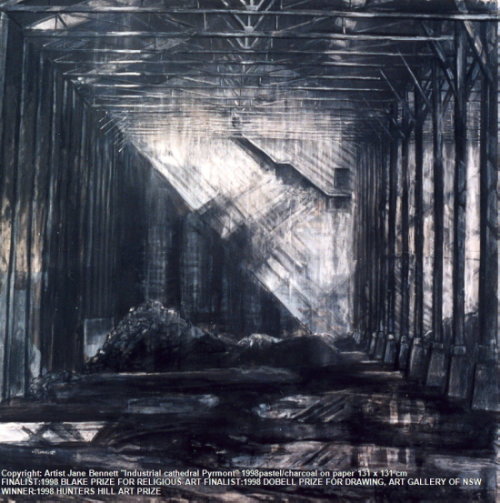Today's painting on the easel of my 'deck gallery' is a view of and from the silos of Summer Hill’s famous Mungo Scott flour mill. This vast behemoth was an icon of Sydney’s inner west skyline for nearly 100 years.
It also evokes memories of a gallery where I used to exhibit between 2003 - 10.
From the early 1990s I used to exhibit in the Delmar Gallery in Summer Hill. When the Director, Max Taylor, left to establish his own gallery, the Taylor Galleries, I exhibited there from 2003 until its closure in 2010. The Mungo Scott flour mill was just a few doors down from the Taylor Galleries in Smith Street, Summer Hill. I was utterly fascinated with it and often painted views of it from the surrounding streets before or after delivering or collecting paintings.
SU12 Mungo Scott Flour Mills Night from the top of the silo
2007 oil on canvas 30 x 30cm
Available for sale
One day in 2004 I finally plucked up the courage to ask to be allowed to paint there. They couldn't have been kinder!
I was given the 'grand tour' of the Escher like maze of criss-crossing, zig-zagging walkways from the main building to the top of the silos. When I returned to paint there, everyone helped carry my easel and wet canvases.
Just as well, as while I was certainly strong enough, I would have been hopelessly lost getting from one building to another. It was so confusing navigating the various levels, and it was complicated by the fact that it was still an operational flour mill.
My guide wore a 'Gumby' style hairnet, goggles and gloves. He joked that people knew whether or not they were gluten intolerant within the hour.
Apparently I am - I was sneezing, wheezing & itching, and had to wear a mask whenever I painted there as I had trouble breathing. I've never really liked bread, and now I know why! 
SU8 Summer Hill Mungo Scott Flour Mills Panorama
2004 ink acrylic pastel on paper 118 x 118cm
Available for sale
The silos were truly scary, especially at night. They were very high up, sloped & some didn't even have guardrails. When I was drawing and painting my huge panoramas of the unforgettable view of the inner west from the top of the silos, I was frankly terrified as I had unfortunately picked the highest silo, and for extra points it didn't have a guardrail.
SU7 Summer Hill Mungo Scott Flour Mills Panorama
2004 oil painting on canvas 91 x 122cm
Enquiries about other Summer Hill paintings
The spectacular view made up for the danger. The Summer Hill freight line carving its way through the inner west was directly beneath me.
Soon it would be literally re-cycled. Some of it would be reserved for light rail, and some would be a cycling track.
I was lucky to get to the Mungo Scott Flour Mills in time. Summer Hill was fast being engulfed by the tide of gentrification transforming former gritty industrial zones into hip neighbourhoods, driving up rents and pushing artists even further away from the inner city.
Related Posts







